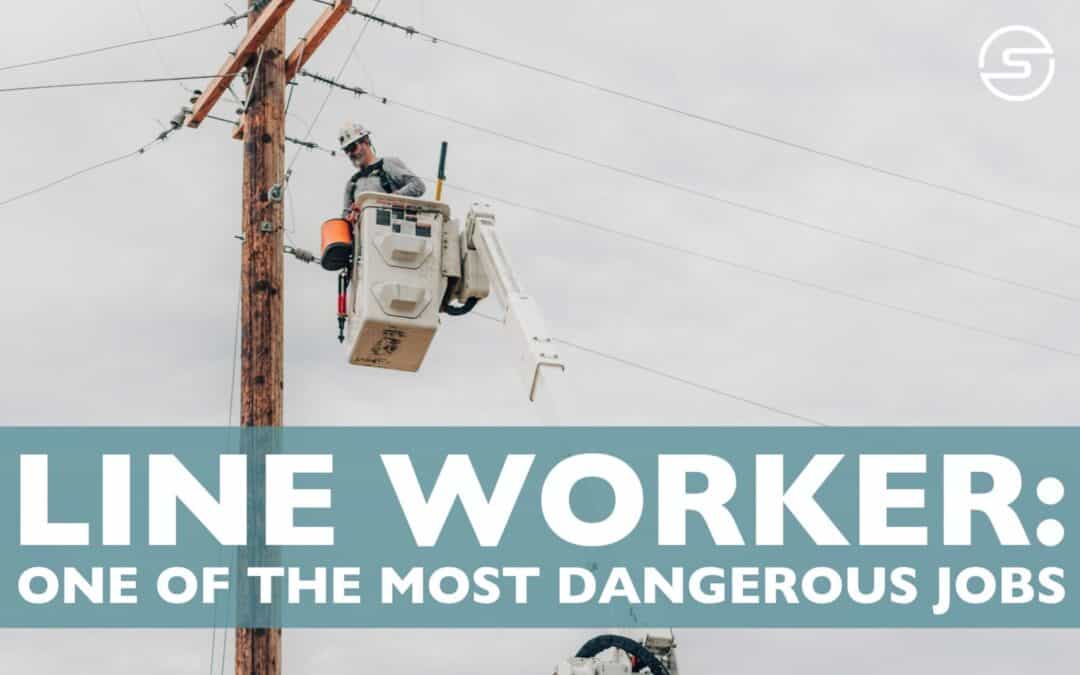Several occupations carry a high risk of injury. Over the last century, regulations have been enacted to reduce the risk of injuries to workers in every field. In addition, new technologies have been developed that can make jobs safer. Sometimes these technologies focus on how jobs are performed; others focus on creating advanced safety equipment. As a result of these changes, jobs like building skyscrapers or working on bridges have seen significant decreases in deaths and injuries over the decades. But some jobs are still dangerous by their nature. Utility line work is one of these jobs.
Did you know that utility line work is one of the most dangerous jobs in the country? According to the Bureau of Labor Statistics, utility line workers have a fatality rate nearly nine times higher than the national average for all occupations. From installing power lines to repairing equipment after a storm, these hardworking individuals put their lives on the line daily to keep our homes and businesses running smoothly.
Falls, Shocks, and Arc Flashes
Utility line work is physically demanding even in the best circumstances, but it also has some unique features that add to the risk. So, what makes utility line work so dangerous? For starters, these workers often work at great heights, perched atop poles or towers, or in bucket trucks, with only a harness to keep them aloft if they lose their footing. Some line workers even work from helicopters!
Add to this the fact that sometimes they are not only working at heights but working at heights in horrendous conditions: snow, cold, rain, sleet, darkness, and in high winds. Under the circumstances, the risk of falls is high. Even with a harness, there is always the danger of slips, trips, or equipment failures.
In addition to working at heights, these workers are frequently exposed to live electrical wires. Because people rely on electricity for their homes and businesses, line workers are only sometimes assured that they can work on a de-energized line to handle a repair or equipment upgrade. As a result, electrocution is another significant hazard faced by utility line workers. Direct contact with an energized line can cause severe injury or death.
A third source of risk is electrical arcs, which are powerful explosions that can cause burns and other injuries. Without the proper protective equipment, arc flashes can cause burns, vision loss, hearing loss, and lacerations.
Yet despite the inherent dangers of the job, utility line workers remain dedicated to their work, ensuring that our lights stay on and our homes stay warm. They are the unsung heroes of the modern world, and we owe them a debt of gratitude for their tireless efforts.
The COMPASS Pro™: Protecting Line Workers
Overall, utility line work is a critical but dangerous occupation that requires workers to have a high level of skill and attention to safety. By understanding the risks and taking proper precautions, these hardworking individuals can minimize the dangers they face and continue to keep our homes and businesses powered and running smoothly.
At Safeguard Equipment®, we develop technologies that protect line workers from one of the most significant dangers they face by manufacturing state-of-the-art voltage and current detectors. Our latest product goes a step further. The COMPASS Pro™ is a voltage and current detector coupled with an injury detector that will enable workers to receive immediate aid if an injury occurs.
The current and voltage detector is a protective device: it alerts the wearer to the presence of energized lines. Unlike other detectors on the market, the COMPASS™ has a 360-degree range of protection and can detect both voltage and current, even through non-ferrous barriers. It provides directional information to the wearer of where the threat lies. It mounts on a hard hat or can be clipped onto a shirt, giving visual and audible alerts. It has multiple sensitivity settings, depending on the work environment.
The injury detection components of the device are reactive. The unit has fall, head-impact, man-down, and arc flash detection. The unit is linked to the user’s iOS or Android phone through the Safeguard Equipment app. If the unit detects a fall, head impact, man-down, or arc flash, it starts an immediate 60-second countdown timer. The countdown timer allows the user to disable the alert in the case of a false alarm or if the event does not require a medical response. If the timer counts down, the app will automatically notify an in-house emergency response team of the event’s time, cause, and location. The in-house team can then initiate its standard response protocol, including summoning 911 emergency services.
At Safeguard Equipment®, we know how essential line workers are to modern life, and we spend our time trying to develop products that can make them safer. To find out more, give us a call. The next time you flip a switch or turn up the thermostat, take a moment to appreciate the hardworking utility line workers who make it all possible and be thankful for their dedication and bravery in embracing one of the most dangerous jobs around.
Views: 26

